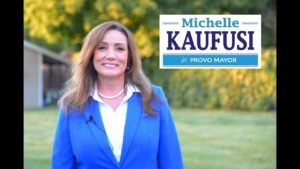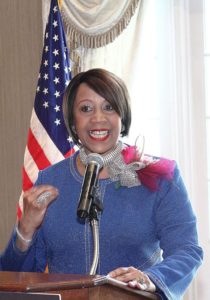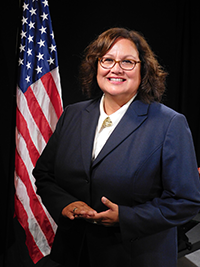Donald Trump’s presidency has not been great for women. There are probably very few people who would dispute this fact. And yet, his election has had one extremely positive outcome for women: more women are running for political office than ever before.
EMILY’s list, a PAC with the mission of electing pro-choice Democratic women to American political office, has seen “a tremendous outpouring of women who are raising their hands and saying they want to run,” said Stephanie Schriock, president of the organization. “We’ve never seen anything like this. It is a truly transformational moment.” Since Election Day 2016, EMILY’s List has heard from more than 20,000 women interested in running for office, varying from House and Senate to Governor, state, and local positions. For comparison, in the entire 2015-’16 election cycle, that number was just over 900.
While last year’s campaign season could have been discouraging for women, it actually was quite the opposite. It galvanized women, inspired women, roused and motivated women… in record numbers. And as Schriock stated, it wasn’t just Trump’s win that did this, but also Clinton’s loss. Clinton’s impending win of the presidency was inspiring for so many women, and when it didn’t materialize, it shocked those same women into action. They were angry and disheartened and they let these feelings spur them into making the choice to run for office.
Clinton’s campaign also allowed for more research to be done on female candidates, and her loss allowed women to learn from her mistakes. But many are learning, too, that what some might see as weaknesses — like the fact that these female candidates don’t look or sound like white male politicians — can actually be an advantage. Trump arguably won the presidency on the promise of bringing change to Washington. If change is truly what voters want, female candidates may be able to deliver that, because recent studies have found that voters are more likely to support female candidates if they see them as governing differently from men.
These record numbers of women running for office are bringing optimism to the women of this nation, considering that women remain underrepresented in state, federal, and local office. They hold 19.6 percent of congressional seats and 25 percent of seats in state legislatures, according to the Center for American Women in Politics at Rutgers University. Twenty-one percent of mayors of cities with more than 30,000 people are women. Women of color hold 7.1 percent of congressional seats and 5.9 percent of seats in state legislatures.
On November 7, the election day of 2017, female candidates quite literally made history. The following is a list of history-making women who won elections at all levels, both local and state, and proved that women will not sit back and be quiet. We are standing up and being louder than ever.

- Danica Roem, who won the Virginia House of Delegates 13th District, became the first openly transgender person to be elected to any state legislature in the country.

- Vi Lyles is the first Black woman to be elected mayor of Charlotte, NC.

- Kathy Tran is the first Asian-American woman to be elected to the Virginia House of Delegates.

- Michelle Kaufusi will be the first female mayor in Provo, Utah’s third-largest-city.

- Jenny Durkan, who is openly lesbian, is the first woman to be elected as the mayor of Seattle in 91 years.

- Andrea Jenkins won a seat in the Minneapolis City Council, becoming the first openly transgender woman of color to be elected to public office.


- Hala Ayala and Elizabeth Guzman are the two first Latinas to be elected to the Virginia House of Delegates.

- Sheila Oliver is the first Black woman to be elected as New Jersey’s lieutenant governor.

- Joyce Craig is the first woman to be elected mayor of Manchester, NH.

- Dawn Adams is the first openly lesbian candidate to be elected to the Virginia House of Delegates.

- Cathy Murillo is the first Latina to be elected mayor of Santa Barbara, CA.

- Lisa Middleton, who was elected to the Palm Springs City Council, is the first transgender person elected to a non-judicial office in the state of California.
So while Trump’s presidency and his administration’s views on women’s issues are far from beneficial to women, at least Trump has sparked this uprising of female political candidates. The listed women have already shown that people are very willing to elect female candidates, and hopefully this trend will continue in the next few years. Voters have shown where their priorities lie through the electing of these candidates. Now, it is time for our government to stop taking steps backwards in regards to women and their rights, and start moving forward.
By: Cianna Allen

